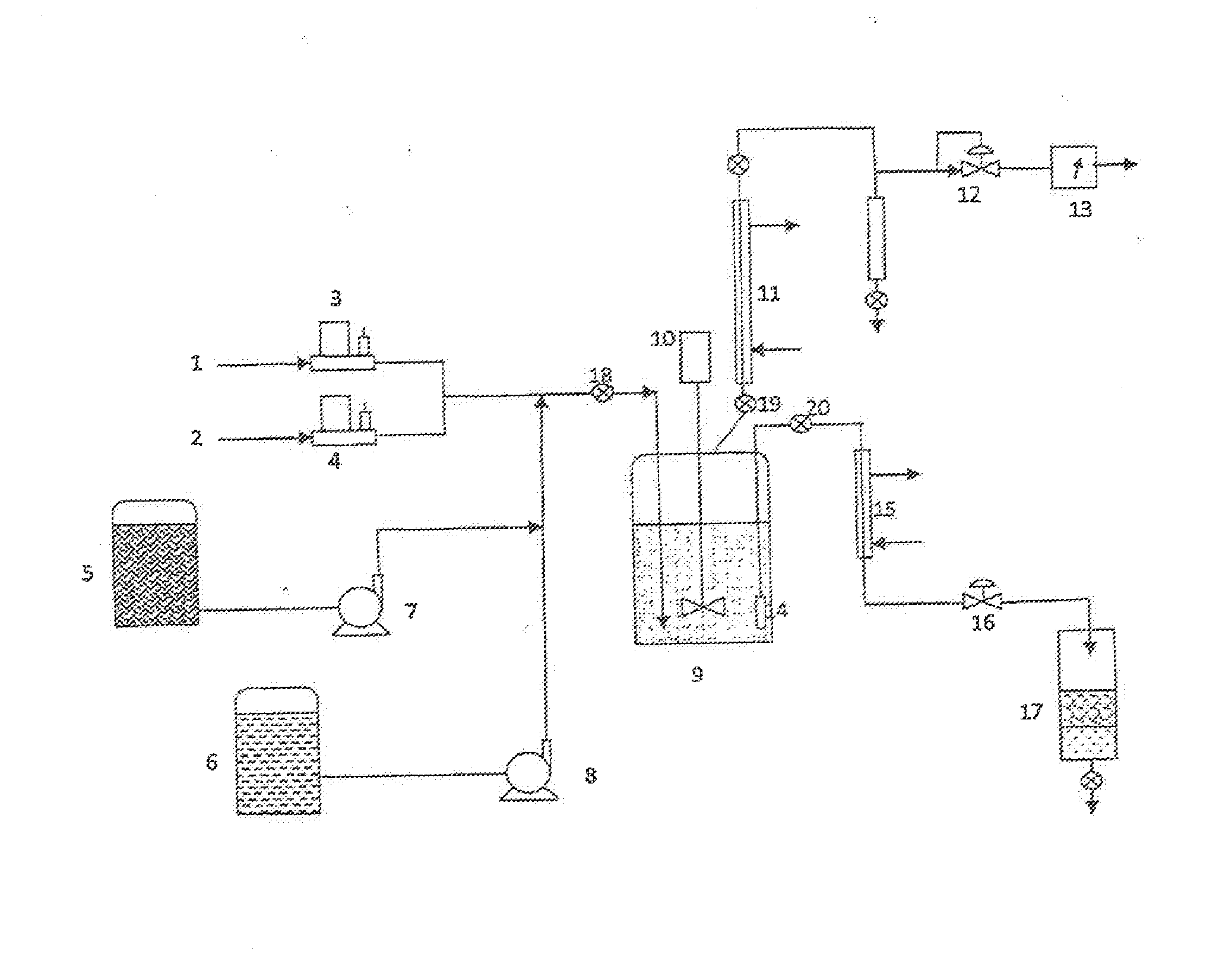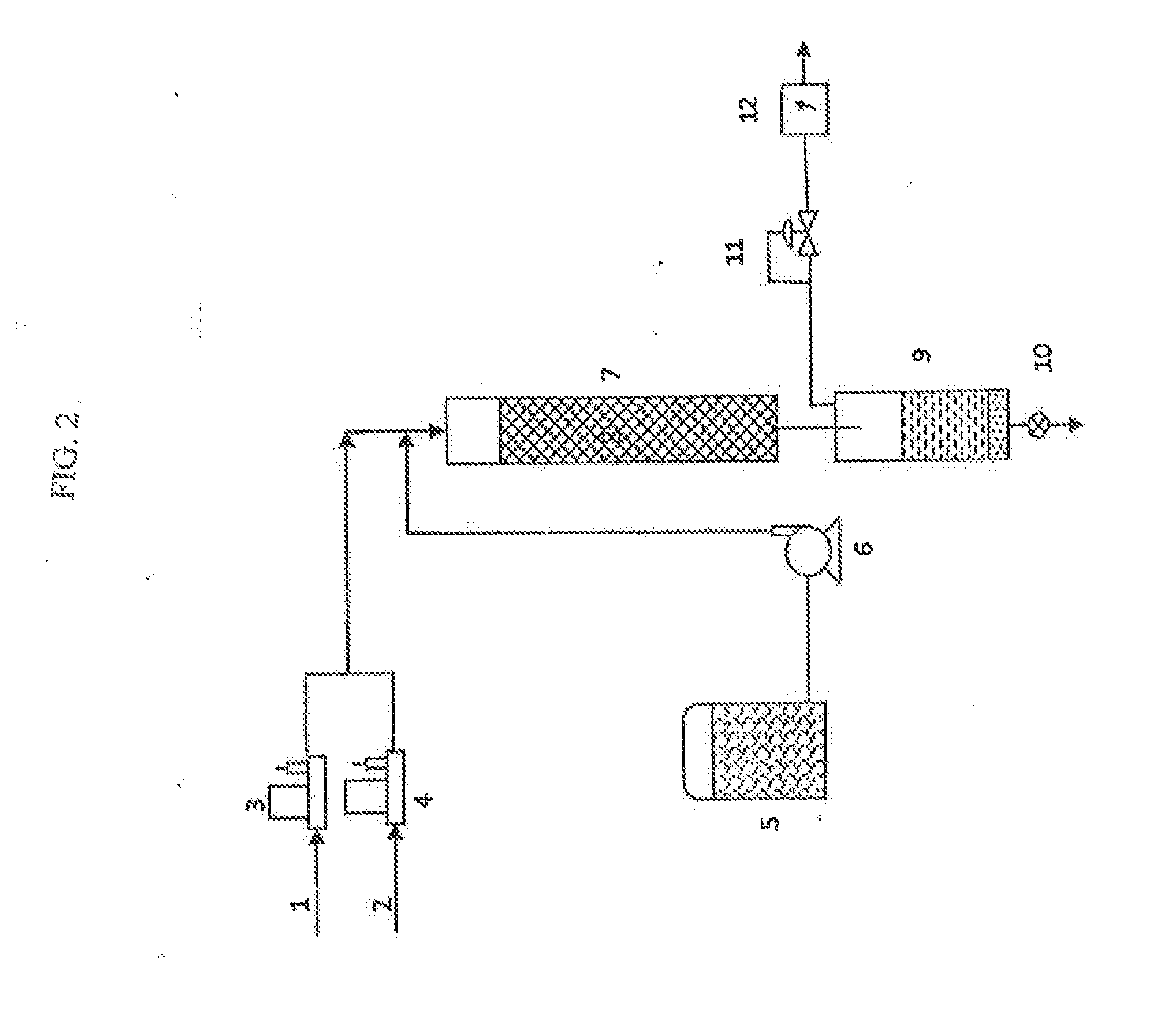Methods of upgrading biooil to transportation grade hydrocarbon fuels
a biooil and hydrocarbon fuel technology, applied in the field of biofuels, biomass liquefaction and biomass pyrolysis, can solve the problems of poor physical and chemical properties, blockages in nozzles and pipes, and there has not been any significant commercial uptake of this technology, so as to reduce the requirement for hydrogen, shorten the residence time, and increase the hydrocarbon yield
- Summary
- Abstract
- Description
- Claims
- Application Information
AI Technical Summary
Benefits of technology
Problems solved by technology
Method used
Image
Examples
example 1
Catalyst Preparation
[0180]A catalyst designated as 10Ni-5Cr / AC containing 10% Ni and 5% Cr on Activated Carbon was prepared by the following procedure. Nickel nitrate hexahydrate, Ni(NO3)2.6H2O, (5 g) and Chromium nitrate monohydrate, Cr(NO3)3.1H2O, (3.8 g) were dissolved in a small amount of deionised water (˜15 g). The support was Norit RX3 Extra Activated Carbon (surface area about 1400 cm2 / g, ball-pan hardness 99 and pore volume about 1 cm3 / g with about 75% of its porosity in meso- and macropores). The Activated Carbon pellets were crushed to a powder with particle diameter about 1 mm. A portion of the prepared solution was absorbed into the powdered carbon support until its porosity became saturated. The saturated carbon was then dried at ˜70° C. in air, after which the remaining solution was absorbed onto the carbon which was again dried at ˜70° C. The resulting impregnated catalyst material was calcined in air at ˜300° C. for ˜3 hrs. Finally, before use, it was reduced under ...
example 2
Batch Hydroreforming with Butanol as Bridging Solvent
[0181]This example illustrates the use of n-butanol as a bridging solvent for dispersing biooil in a hydrocarbon liquid. Both biooil and hydrocarbons have high solubilities in butanol.
[0182]10 g of a 10Ni / AC catalyst, prepared as in Example 1, were placed in the autoclave reactor and reduced under a trickle flow of hydrogen at 330° C. for 3 hours. The reactor was cooled and 101.0 g of biooil, 30.1 g of n-butanol and 21.0 g of xylenes were added to it. The autoclave was sealed, pressurized to 900 psia (6.2 MPa) with 10.5 L NTP of H2 and then gradually heated with stirring to 250° C. over a period of about 2.5 hrs. The reactor was maintained at 250° C. for a further 2 hrs after which it was cooled. Since the pressure had risen to nearly 2000 psia (13.8 MPa) by this time, the reactor was quickly cooled to room temperature, causing the pressure to fall to 330 psia (2.3 MPa). The product gas, a total of 3.8 L, was vented and analyzed. ...
example 3
Batch Hydroreforming Using Partially Upgraded Biooil as Bridging Solvent
[0192]The partially upgraded biooil (PUB) distillation residue produced in Example 2 is partially deoxygenated compared to raw biooil and therefore may be expected to be more hydrophobic. It was hypothesized that it might itself serve as a bridging solvent (dispersing agent). Consequently a batch experiment was carried out in a similar fashion to Example 2, but in which the reactants were 25 g of the PUB, 25 g of biooil, 12.4 g of xylenes and 5 g of 10Ni / AC catalyst. The autoclave was pressurized with hydrogen to 400 psia (2.7 MPa) and rapidly heated to 320° C. where it was maintained for 3 hrs, during which time the maximum pressure reached was 1820 psia (12.5 MPa).
[0193]After cooling, the liquid product separated into 38.1 g of a lighter organic oil phase and 10.4 g of a denser aqueous phase. The aqueous phase had a water content of 80.81 mass % and contained 1.96 g of acetic acid and 0.05 g of methanol. The o...
PUM
 Login to View More
Login to View More Abstract
Description
Claims
Application Information
 Login to View More
Login to View More - R&D
- Intellectual Property
- Life Sciences
- Materials
- Tech Scout
- Unparalleled Data Quality
- Higher Quality Content
- 60% Fewer Hallucinations
Browse by: Latest US Patents, China's latest patents, Technical Efficacy Thesaurus, Application Domain, Technology Topic, Popular Technical Reports.
© 2025 PatSnap. All rights reserved.Legal|Privacy policy|Modern Slavery Act Transparency Statement|Sitemap|About US| Contact US: help@patsnap.com



